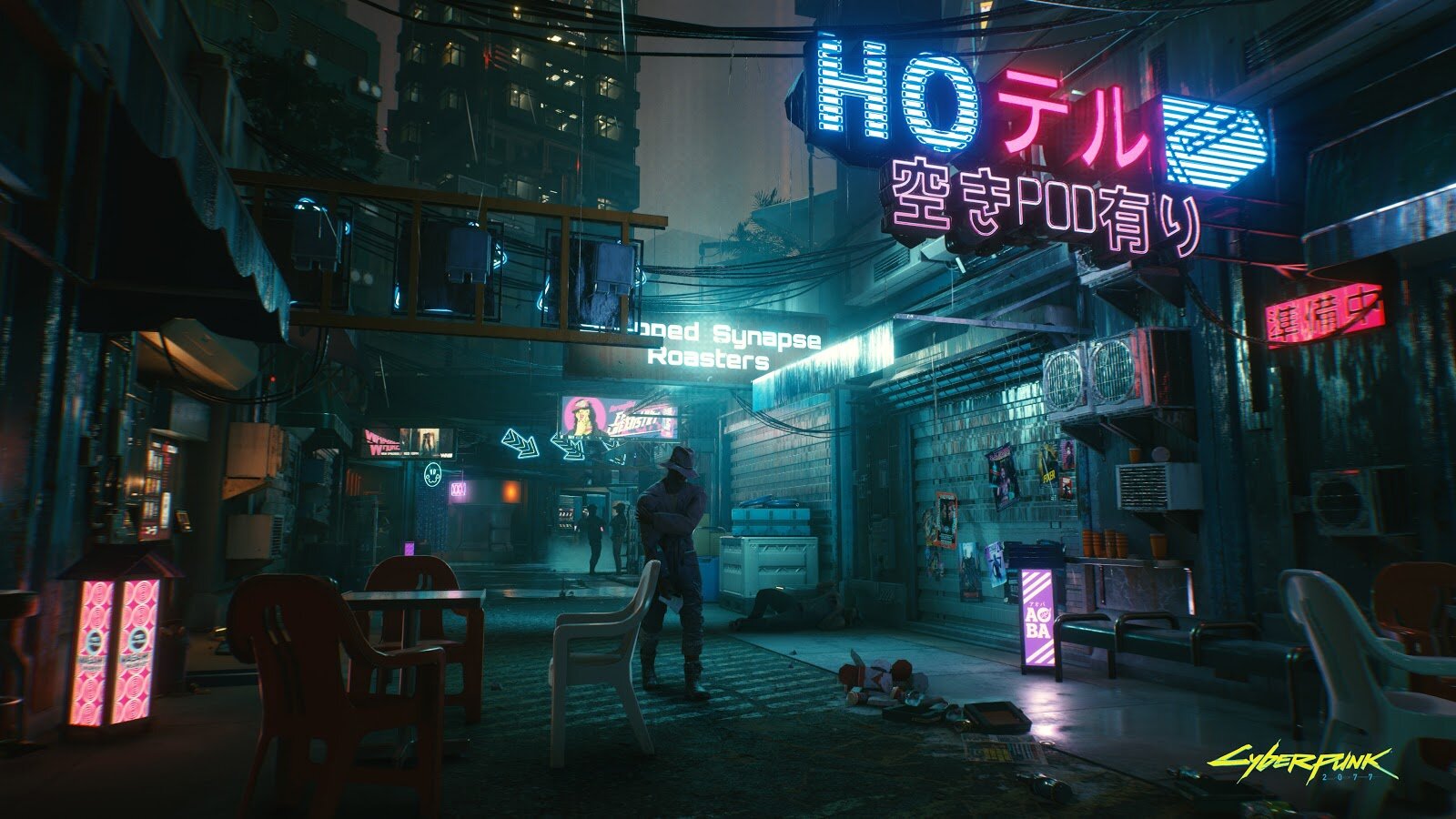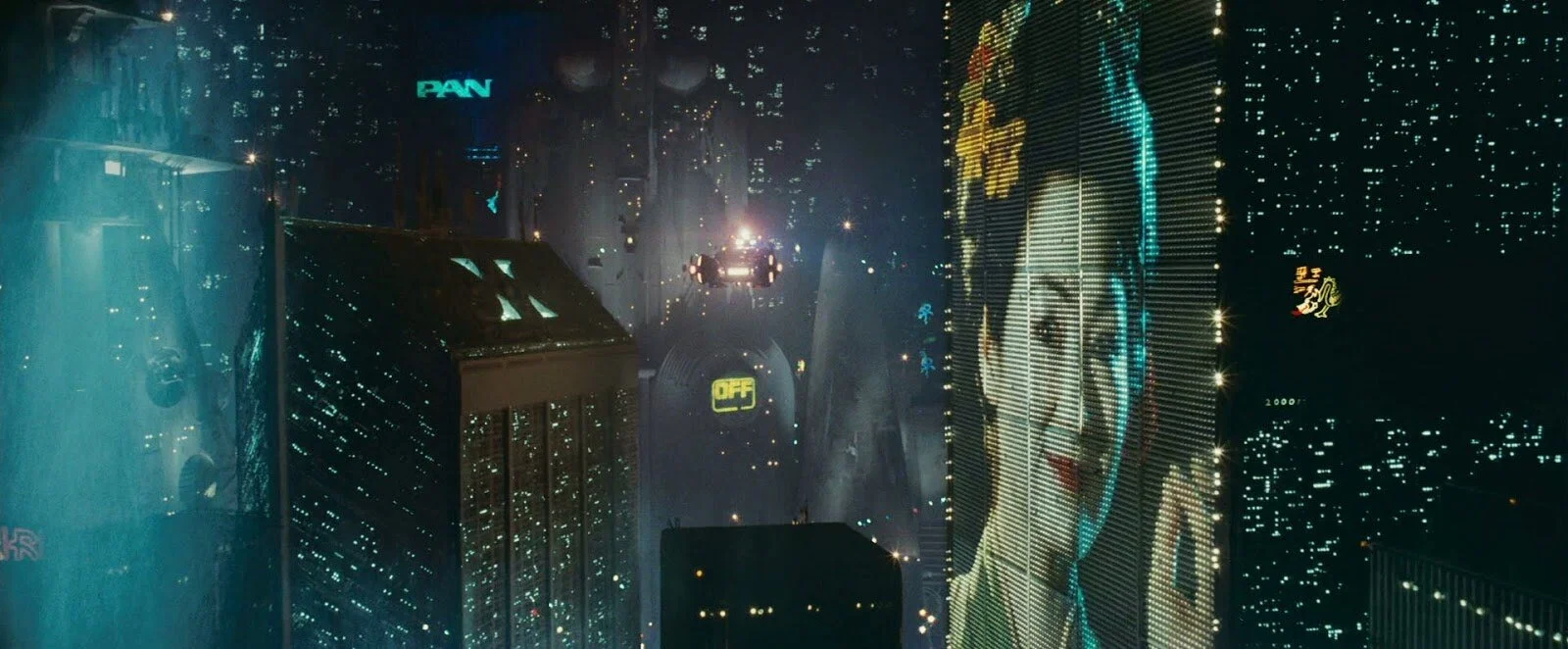What’s Cyberpunk Supposed to Sound Like Anyway?
It’s fair to say that the reception to “Cyberpunk 2077,” the biggest video game release of 2020, has been… mixed. While many parts of the game fall flat, “Cyberpunk 2077” gets one thing very right — the aural aesthetic of Cyberpunk.
Written by Wonjune Lee
Photo courtesy of CD Projekt RED
Cyberpunk has always been a genre defined by its aesthetic. The genre has a well-established look and feel, one that evokes rainy cityscapes, extravagance juxtaposed with destitution, and human progress that only seems superficial. One crucial part of this aesthetic has always been sound, and the recently released video game “Cyberpunk 2077” features a lot of it. The Action/RPG’s soundtrack consists of more than 150 tracks, varying from more traditional Cyberpunk fare such as punk rock, synthpop, and Denpa, to newer additions like Latin hip-hop. The size and diversity of the tracklist highlights the fact that there exists a vast amount of music that could claim to be “Cyberpunk.” This, of course, didn’t happen overnight. The well-established feel of Cyberpunk, including its music, is the result of every piece of the genre’s media that came before, adding its own ideas of how a high tech, low life future should sound.
Ridley Scott’s 1982 film “Blade Runner” is a seminal work of the genre that established how a Cyberpunk world should look and sound in an audio-visual medium. It would be impossible to discuss the film without touching on its phenomenal soundtrack by legendary composer Vangelis. The soundtrack is not a traditional film score, even by today’s standards. Its pieces sound very ambient, with empty spaces in the composition, alongside lengthy reverb, creating a distinct aural atmosphere that is sentimental, yet somewhat melancholy. A great example is “Tears in Rain,” in which Vangelis’s use of airy synthesizer sounds with emphasized reverb compounds this effect, helping the track evoke both bleakness and hope, a theme of “Blade Runner” and the Cyberpunk genre as a whole. Tracks such as “Love Theme,” which features a slow saxophone solo played on top of a Yamaha CS-80, are extremely jazz-influenced, complementing the film noir plot of the project.
Photo courtesy of Columbia Pictures
Another element that “Blade Runner” adds to the Cyberpunk sound is the use of Asian-sounding elements. “Main Theme,” the first track of the movie, for instance, begins with a synth riff reminiscent of a Japanese koto being plucked. It complements the 1980s vision of a Japanized future Los Angeles, a city that looks more like ‘80s Tokyo than LA, replete with Japanese advertisements plastered on skyscrapers alongside Japanese street vendors selling noodles in the rain. While “Blade Runner”’s vision of an Asianized future has come to include cultures outside of Japan, it’s something that has unmistakably become a part of the Cyberpunk genre.
The Japanese elements in “Blade Runner”’s vision of Cyberpunk were accepted, somewhat proudly, even, by the Japanese, as can be seen in the seminal Anime films “AKIRA” (1988) and “GHOST IN THE SHELL / 攻殻機動隊” (1995). These films take the Cyberpunk aesthetic established by “Blade Runner” in 1982, and Asianizes it even more — In terms of setting, “AKIRA” takes place in a ‘Neo-Tokyo’ built on the nuclear ashes of present-day Tokyo, while “Ghost in the Shell”’s cityscape is blatantly inspired by Hong Kong. Musically, they are both heavily influenced by traditional Japanese music. “AKIRA”’s opener “KANEDA,” by Geinoh Yamashirogumi, predominantly features Japanese lyrics “ラッセラ” or “Rassera,” a chant that can be attributed to Japanese festival music. The ambience established in “Blade Runner”’s soundtrack is still present, but the instrumentation is decidedly traditional, a reflection of the film’s theme of spirituality.
“謡1ーMaking of Cyborg [Chant 1 – Making of Cyborg],” the main theme of “Ghost in the Shell,” by Kenji Kawai, as the title suggests, is a Japanese chant. It features a suzu, a type of bell associated with Japanese Shinto ceremonies, while the medieval Japanese lyrics once again create a mystical, spiritual atmosphere that complements the film’s discussion of the human spirit in a future where the human soul has become portable. While distinctly Japanese, the music of both “AKIRA” and “Ghost in the Shell” takes influence not only from Japanese traditional music, but also from other traditional music of different cultures. “KANEDA” features elements of “jegog,” a style of music from the island of Bali played with bamboo instruments, while Bulgarian choir music has been cited as a possible influence in “Chant 1 – Making of Cyborg.” Cyberpunk media that came after “AKIRA” and “Ghost in the Shell” would continue to take inspiration from different cultures, and “Cyberpunk 2077” is no exception.
Photo Courtesy of Toho
“Cyberpunk 2077,” as the latest entry to the genre, also leaves its own fingerprints on its sound. Prior to the game’s release, it would have been difficult to associate Latin hip-hop with Cyberpunk. One of “Cyberpunk 2077”’s in-game radio stations, “30 Principales,” is devoted entirely to Latin hip-hop, and complements the setting of the game, in which ecological disasters have led Caribbean people to migrate to California. Tracks featured in the station, such as “Dinero” by Konrad OldMoney, are clearly influenced by Caribbean music, especially in their pronounced bass beat, which aids to emphasize the action taking place inside the game. While the addition of Latin music to “Cyberpunk 2077” is definitely a fresh input to the genre, it’s also interesting how Cyberpunk, a genre connected to California from its origin, has largely overlooked Latinx culture and hip-hop. Even in “Cyberpunk 2077,” the exploration of these cultures is superficial at best, almost an afterthought in the underdeveloped story, serving merely as a backdrop for carnage. The inclusion of these cultures into the genre still leaves much to be desired, and it’s something that should be developed further as the genre continues to make a statement about present-day issues through its vision of the future.
While the sonic signature of Cyberpunk music has changed over time, it has always attempted to be something that would not feel out of place in a city of the future. While futuristic music could simply equal electronic, synthesized sounds, Cyberpunk music shows that it could simultaneously include ethereal chants and Balinese instruments. Humanity’s concept of the future is constantly changing, and the music of Cyberpunk is a testament to that. Still, one thing has remained constant from its beginning — the future is going to be increasingly diverse, and cultures will combine to create sounds that are presently-considered alien. For all the doom and gloom of the ‘dark vision of the future,’ that’s one thing we can all look forward to.



